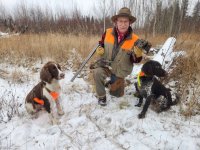Shotgunners have not been arbitrarily been able to determine the powder and shot charge by the height of the brass for many years, I'm not sure how long , but I think t pretty much went out with the advent of plastic hulls or shortly afterwards. I have seen several European shells in the past as well as North American ammo with very powerful, low brass shells, depending on the manufacturer!Yes, the term seems to have fallen out of favour, but when upland hunting I only shoot 'low brass' shells, literally meaning the brass is low cut but more importantly meaning the powder and shot loads are modest. I bought a whole case of these in shot size 7 1/2 when I found they patterned well in my old Browning BSS, but 40 years later am still shooting out of it. Reason I went that way was mainly that some authority I had read persuaded me that high brass (high powder load) shells will blow a hole through their own shot column, the shot column being practically the be all and end all in wing shooting. I guess the present day equivalent are 'club' shells, but my low brass ones are labelled for upland, giving me that tiny mental edge.
As far as hand loading goes as well, it is not always the case either ( no pun intended)
My all time favorite 28 gauge load that I have used for pheasants and ducks as well as geese in a low brass Cheddite hull is 30 grains of H110, a BPI HV28 wad, and a shot charge of 7/8 oz of #7 nickle plated lead or (for waterfowl over decoys) #4 Bismuth .
The same powder charge can be used in the original AA hulls but with only 3/4 oz of #9 shot.
The choke itself will determine whether or not the load will work well.
When I am hunting up in my home turf with a 28 for Sharptails and partridge however, I prefer a lighter shot charge for them, and use my skeet load with a Winchester AAHS hull, 14.5 grains of Longshot and a wad like the BPI SG28 and 3/4oz of shot.
There is simply no need to throw a big charge of shot going 1,400 FPS if you are hunting over good dogs , which we do.
The big caveat however, is not WHAT you are shooting, but HOW you are shooting it! LOL
I can't speak for anyone else, there is absolutely no excuse for me to not practice as much as I can to keep my edge up as far as killing birds on the wing goes, or blame anything but my lousy shooting when it comes to missing a bird!
Cat
Last edited:







































































